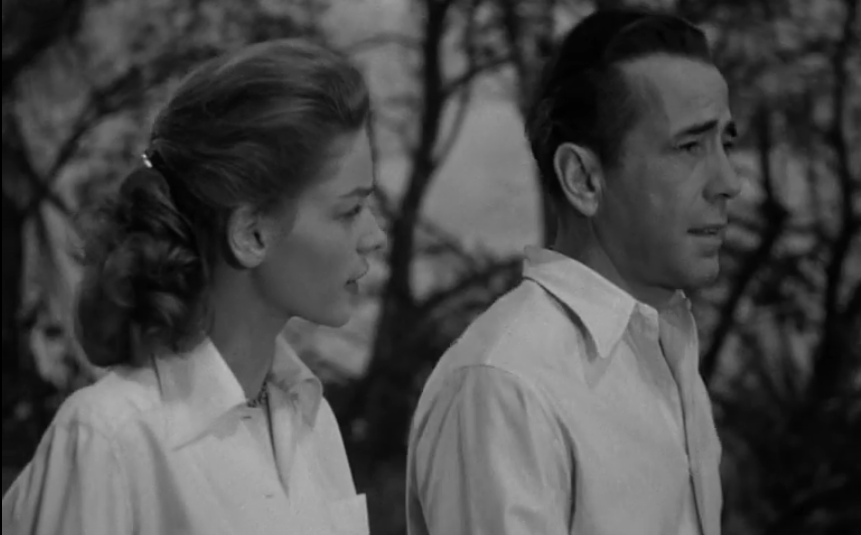Movie Review: Key Largo (1948) directed by John Huston
Frank McCloud (Humphrey Bogart) was a major in the United States Army during World War Two. During the Italian campaign, one of his men (and a friend), George Temple, perished in combat. While initially an idealist, the violence of the war left Frank disillusioned, and the America he returned to seems no longer worth defending. Frank’s become a drifter, and he decides to visit the Florida Keys to briefly connect with George’s people, then try his luck in Key West. His bus to Key Largo is stopped by the police, who are looking for two escaped prisoners, Seminoles called the Osceola Brothers. (It’s not mentioned, but note that the darker faces are towards the back of the bus.)

Despite it being summer, the off-season for the Keys due to the sweltering heat, there are residents at the Hotel Largo, allegedly a deep-sea fishing group. Most of them are hostile to Frank, except for drunken horse racing fan Gaye Dawn (Claire Trevor.) They become slightly friendly when they learn that Frank’s intention is to talk for an hour or two with hotel owner James Temple (Lionel Barrymore) and George’s widow Nora (Lauren Bacall) and then hop the next available bus.
Frank’s departure is delayed by helping to prepare for an oncoming hurricane; a group of natives (including the Osceola Brothers (one is Jay Silverheels!)) arrive hoping to take refuge in the sturdy hotel building. Unfortunately, the “fishing expedition” is unwilling to share. The previously unseen “Mr. Brown” turns out to be Johnny Rocco (Edward G. Robinson), a former big-time gangster who’d been deported before the war, and is hoping to make a comeback from his base in Cuba by delivering a “shipment” to local mobsters. He and his minions Curly (Thomas Gomez), Toots (Harry Lewis), Angel (Dan Seymour) and Ralph (William Haade) terrorize the others and hapless deputy sheriff Sawyer (John Rodney) who came back looking for the Osceolas.
With the hurricane closing in and nerves on edge, who will survive?
This 1948 film noir was adapted from a play of the same name, but apparently director John Huston hated the script he’d been assigned, and had it almost completely rewritten, keeping only the location and the escaped prisoners plot element.
The movie is well-directed, and there’s some stellar acting on display, not just from our leads but the supporting cast as well. Bogart is believable as the world-weary Frank McCloud, thinking that maybe America will in fact just fall back into Rocco’s hands, but not quite ready to completely surrender. Robinson likewise puts in an iconic performance as Johnny Rocco, who was an “emperor” once and is still dangerous on the local level, but not nearly as brave when guns and goons won’t turn the trick.
Good attention is also given to lighting effects as the power goes out during the hurricane.
Racism is touched on; the sheriff is only too ready to believe that the Osceola brothers have committed crimes on the word of a white man, which leads to tragedy. (The lesson is quickly minimized by laying the primary blame on evil men.)
The suspense rises and falls, leading to McCloud finally taking decisive action.
Content note: Johnny Rocco is long-term abusive towards Gaye Dawn, which has turned her into an alcoholic wreck, and his goons feel free to slap and bully her as well. Off-screen torture. Ableist language directed at Mr. Temple, who uses a wheelchair. The afore-mentioned racism. Most characters drink alcohol and smoke. General bullying by the gangsters. Blood is only briefly seen.
Overall: One of the greats. Highly recommended to fans of suspense films.

